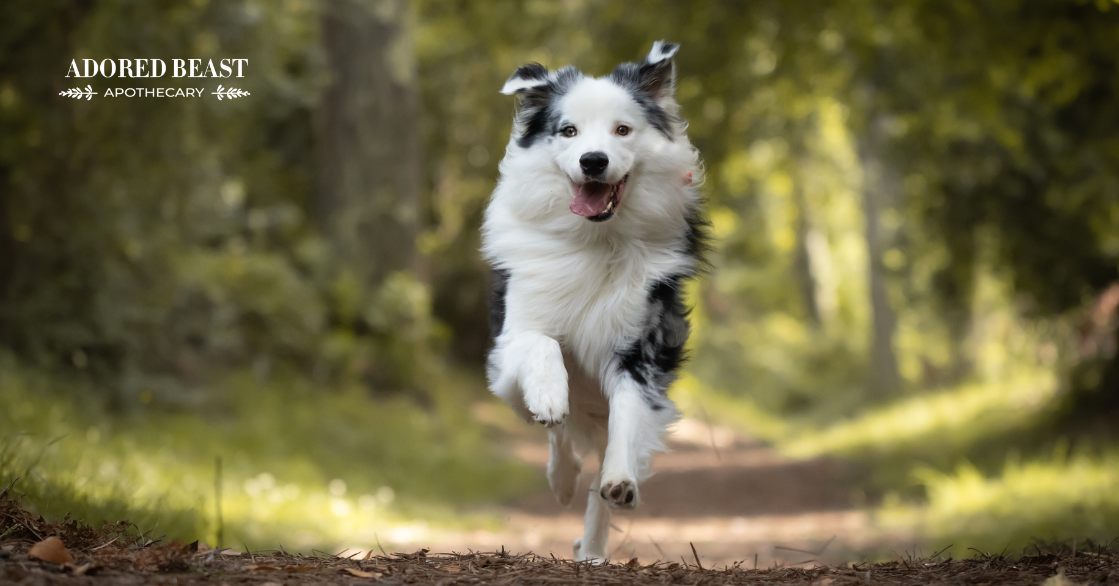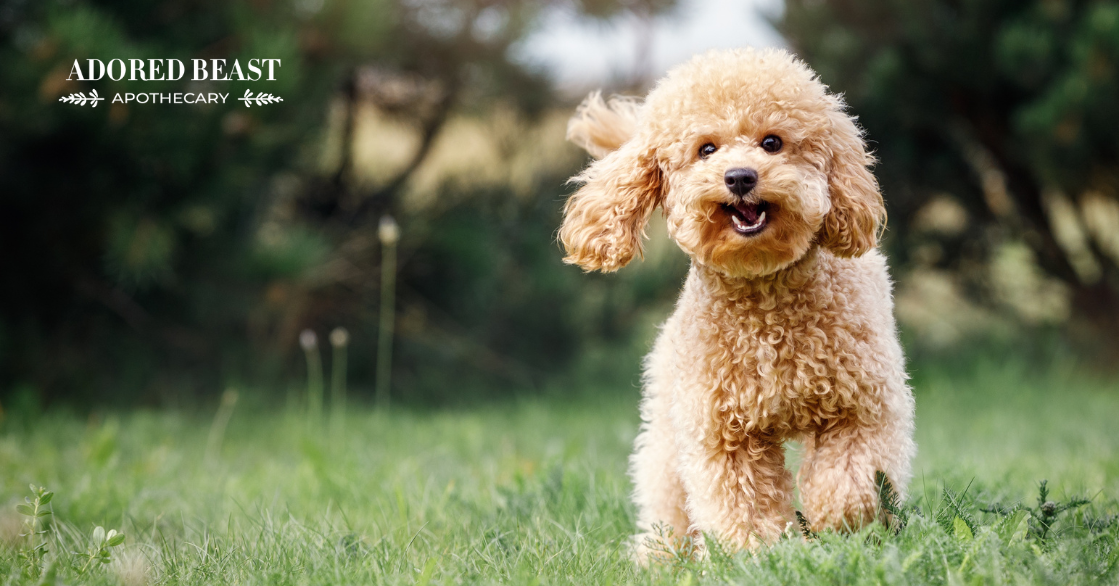As pet parents, we all want to provide the very best to ensure our dogs live long, healthy, happy lives. But sometimes it can be easy to forget about the threat of disease when our dogs seem healthy. We carry on without worry until something springs up.
And this couldn’t be more true than when we’re talking about our dogs’ joint health.
If we focus on joint health from the very beginning, our dogs stand a much better chance of having healthy joints for longer. Perhaps we can even prevent arthritis from taking hold as they grow older. After all, an ounce of prevention is worth a pound of cure. It’s much, much easier to stop a health condition from happening in the first place than it is to correct it after it has taken hold.
Today, we’re talking about the very real ways that you can work on proactive joint health for dogs. There are so many different ways to protect those joints!
Common Joint Issues in Dogs
Canine arthritis is very common, and it tends to be what most pet parents think of when they think of joint issues. But arthritis is just one of the many things that can impact joint health.
Joint problems tend to fall into two different categories:
- Developmental Joint Issues – issues present from birth. These are caused by genetic issues, and could manifest early, or predispose them for issues in the future (for example, hip dysplasia in large breed dogs or cruciate tears in almost every breed nowadays).
- Degenerative Joint Issues – issues caused by repeated use over time. This could be just general wear and tear or an injury. The most common of these is cruciate ligament problems, where tissues degenerate over time and with repeated use until more severe problems and pain develop as a result. Other degenerative problems include stress fractures and osteoarthritis. (We’re seeing this earlier and earlier in dogs 🙁 – sometimes as young as 3-4 years old, especially with really active dogs – for example, agility, frisbee, etc.)
The most common signs of joint pain include:
- Lethargy
- Limping and stiffness
- Loss of appetite
- Irritability
- Depression
- Frequent slipping while moving about
- Licking, chewing, or biting the affected area
- Muscle loss
- Lack of interest in previously loved activities
- Sleeping in different areas of the house
- Panting when it’s not hot
If you notice any of these symptoms or behaviors in your dog without an obvious cause, it might be time to make an appointment with your veterinarian to have them examined for any underlying conditions. If you’re able to find a veterinary clinic that offers different forms of therapy (acupuncture, water therapy, osteopathy, etc.) – do it! That way, you have so many different natural options to try first before going down the road NSAIDs. Really explore all of those options – NSAIDs should not be given long-term, and they have terrible side effects that can have chronic health impacts.
Whatever the cause, it’s essential to be proactive and provide as much support for joint health for dogs as possible.
So, how can you do that? We’re so glad you asked!
5 Tips for Proactive Joint Health for Dogs
1. A Balanced Diet
Proper diet is massively important when it comes to supporting your dog’s joints. We can’t stress enough the value of a species-appropriate diet here. Raw meat (muscle meat, organ meat, and bone) delivers so much as far as nutritional support – the protein, the amino acids, and the essential vitamins and minerals all dogs need for healthy joints.
These are some other healthy additions that feed joint health for dogs:
- Calcium – Raw milk and digestible bone (chicken and turkey necks are awesome) are two great sources of calcium.
- Magnesium – Swiss chard, spinach, and soaked almonds are great for magnesium.
- Bone Broth – Bone supports bone, and bone broth is chock full of valuable collagen. It’s easy and inexpensive to make! Here’s our recipe!
- Eggs – Raw eggs, WITH the eggshell membrane, are great for joint health. Eggshell membranes (that’s the lining of the eggshell) is a natural source of collagen, glucosamine, chondroitin, hyaluronic acid, and calcium – nutrients that are essential for maintaining healthy joints.
- Antioxidant-rich foods – Free radicals can cause cartilage damage, and such damage can cause joint issues over time. Antioxidants can help reduce that cartilage damage, thereby reducing pain and inflammation. Include foods such as berries, broccoli, kale, and spinach.
2. Joint-Supportive Supplements
Along with a balanced species-appropriate diet, there are many other things you can add to help target joint health for dogs.
- Omega 3s – Omega 3 fats, especially DHA and EPA, are best known for their anti-inflammatory and immune-modulative properties. Those anti-inflammatory properties help in the prevention of arthritis and support with the pain relief.
- Phytoplankton – Phytoplankton supplies complete nutrition with trace minerals, chlorophyll, essential amino acids, omega 3s, protein, carotenoids, vitamins, and the powerful antioxidant SOD (superoxide dismutase), all on its own! It’s a natural superfood. It can be a powerhouse addition for proactive joint health for dogs.
- Medicinal Mushrooms – Several different medicinal mushrooms, turkey tail for example, contain active ingredients that target joint health. The anti-inflammatory properties of the turkey tail mushroom also help reduce pressure on the joints and swelling that causes pain. Many, like the chaga mushroom, also contain high concentrations of antioxidants.
- Glucosamine, Chondroitin, and MSM – These are natural components of cartilage and synovial fluid. They play a role in cartilage synthesis, maintenance, and repair and are often used for joint-related pain – just be careful, they can cause stomach upset in some sensitive bellies.
3. Proper Exercise
All dogs need exercise.The body needs to move to keep those joints (and all the connective tissues) strong and mobile. It also plays a major role in helping your animal maintain a healthy weight – something we’ll talk more about later.
But not all exercise is proper.
For puppies, too much too early can be detrimental. Growing puppies need extra attention when it comes to proper joint development. And breed matters. Large breed puppies grow quickly but mature slowly, so hold off on excessive activities like agility until they are fully grown. In contrast, smaller breeds mature more quickly, but they tend to have less tolerance for high-level exercise.
For seniors, exercise is still very important. It keeps the joints and muscles limber and flexible. Just keep in mind that some exercises can do more harm than good. Middle-aged and senior dogs may find certain activities too hard on their joints. If your pet is older, or if arthritis is a concern, perhaps break up long walks into a few shorter walks during the day. Swimming – if they like it – is an excellent way to keep them active. Avoid overexerting your senior pet or asking them to do too much. If you need to pull your dog along, or your dog is lagging behind, you’re NOT doing them any favours – emotionally, physically, or mentally – and could be speeding up their decline.
And remember, many dogs – regardless of age, will push through, even when they’re uncomfortable. They’ll continue to walk or play, even when they should stop. And they may not even let us know unless we’re paying very close attention!
To ensure that your dog’s exercise is beneficial, pay attention to breed, age, and ability. And don’t forget the mental stimulation alongside the physical to keep the mind sharp (this means not being on your phone while you’re walking. This should be your dog’s time. If you possibly can, you can use this time to disconnect from the world and reconnect with your dog. This is extremely healthy for your mental and physical wellbeing.
4. Maintain a Healthy Weight
Your dog’s weight can play a role in the development of joint issues over time, so it’s really important to keep an eye on it and work to maintain a healthy weight. This is true of all ages, but is particularly important as our dogs get older. More weight on the body means more stress on the joints. The body has to work harder, and that isn’t a good thing.
Obviously exercise is important here, and you want to make sure you’re giving your dog ample opportunity to burn off energy. Walking, hiking, and swimming are all good ways to help keep weight in check.
Watching food intake is also a no-brainer. If your animal is taking in far more calories than they burn off, that will inevitably lead to weight gain (just as it does with humans). Too many treats, processed food, even just too much food in general can all lead to obesity. Watching your pet’s weight and feeding to maintain a healthy weight is a great way to start.
If your animal is overweight, starving them is not the way to go. You have to go slowly. They don’t understand, so you have to keep that in mind. If you’re decreasing calories, increase their chew time. Give them large bones so they’re at least doing something (like us chewing gum when we’re hungry and trying not to eat). Always put yourself in your dog’s shoes – if you’re dieting, what makes you feel stressed or content?
But food and exercise are not the only things that impact your pet’s weight. Other things to consider (and support), for overall joint health include:
- Gut Health – The mucosal lining of the gut plays a major role in several metabolic processes, such as insulin sensitivity, glucose intolerance, fat storage, and appetite (talk about a connection to obesity!). Give the gut some love with probiotics, herbs and minerals that aid in the healing of the gut lining, such as slippery elm, marshmallow root, deglycyrrhizinated licorice, and fulvic and humic acid, and stay away, as much as you possibly can, from drugs and antibiotics – they destroy all gut bacteria – good and bad! Rotating in Gut Soothe can be helpful here!
- Stress – Stress elevates cortisol levels in the body, which leads to weight gain. Chronic stress, due to household stressors, boredom, a lack of exercise and healthy stimulation and pack/family time leads to chronic increased cortisol. This also includes some forms of fasting and decreasing calories too quickly. Keep stress in check as much as you can.
[NEXT UP] Cat and Dog Obesity: It’s Not Just About Your Animal’s Diet
5. Support the Muscles
When it comes to proactive joint health for dogs, it’s vital to pay attention to more than just the joints. The rest of the body plays a role in supporting the joints, but the holistic approach all too often gets forgotten about.
The muscles form an integral part of that. They prevent all the weight from being solely supported by joint and bone. Unhealthy muscle tissue leads to increased wear and tear, leading to earlier deterioration inflammation and arthritis.
Every muscle in your dog’s body has an interwoven connective tissue that attaches the muscle fibres and bundles together. This connective tissue, which looks like steak gristle in large bundles, is composed of collagen strands that give it a tremendous ability to withstand pulling or longitudinal strains. It also has limited elasticity, which allows it to stretch while still holding the tissues together. Without the connective tissue holding the muscles together, your furry friend would lose his strength and the ability to move his bones or support his frame.
It’s important to understand that if you’re giving supplements to just support the joints and not the muscles, ligaments, cartilage and tendons, you’re missing the mark!
To support the muscles to in turn support joint health, adding the following vitamins can be highly beneficial:
- Vitamin C – Found in raw meat, swiss chard, spinach
- Vitamin B – Eggs, lean meats, legumes, nuts, and leafy greens are all high in vitamin B
- Vitamin D – Make sure to spend lots of time outside in the sunshine with your pup, and add beef liver, raw milk, and egg yolks to the diet
- Vitamin E – Foods high in Vitamin E include sunflower seeds, spinach, avocados, squash, olive oil, hemp seed oil, and broccoli
With a little thought and dedication, we can all provide those delicate joints with some extra TLC. Doing so will help protect not only joint health for dogs, but overall health in general. And that’s always something we can stand behind!












